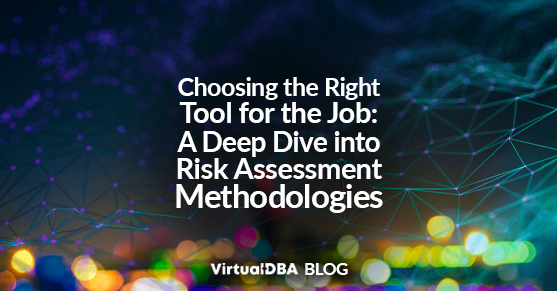Our previous post discussed the critical importance of conducting a comprehensive risk assessment for your database management system (DBMS). A vital component of this process is selecting the appropriate risk assessment methodology. This blog post will delve into several popular methods, highlighting their strengths and weaknesses to help you make an informed decision.
Understanding Risk Assessment Methodologies
A risk assessment methodology is a systematic approach to identifying, analyzing, and evaluating potential risks. The choice of methods depends on various factors, including the organization’s size, industry, risk tolerance, and available resources.
Failure Mode and Effects Analysis (FMEA)
FMEA is a proactive approach to identifying failures within a system and their potential effects.
Pros:
- Detailed analysis of potential failure modes.
- Focuses on preventing failures rather than reacting to them.
- It can be used for both product and process-related risks.
Cons:
- It can be time-consuming and resource-intensive.
- Relies heavily on expert knowledge.
- It may not be suitable for complex systems with numerous interconnected components.
Operational Critical Threat, Asset, and Vulnerability Evaluation (OCTAVE)
OCTAVE is a collaborative risk management process involving stakeholders across the organization.
Pros:
- Comprehensive approach considering people, process, and technology.
- Focuses on organizational culture and risk management practices.
- Provides a structured framework for risk assessment and management.
Cons:
- It can be time-consuming and requires significant organizational commitment.
- Requires skilled facilitators to conduct workshops effectively.
- It may be overly complex for smaller organizations.
Risk Assessment and Management (RAM)
RAM is a structured approach to identifying, assessing, and controlling risks. It involves a systematic risk identification, analysis, evaluation, treatment, and monitoring process.
Pros:
- Flexible methodology is adaptable to different types of risks.
- Provides a clear framework for risk management.
- It can be used for both qualitative and quantitative risk assessment.
Cons:
- Requires a deep understanding of risk management principles.
- It can be time-consuming to implement.
- It may not provide sufficient detail for complex risks.
Hazard and Operability (HAZOP) Study
HAZOP is a systematic technique used to identify and assess potential hazards in a process or system.
Pros:
- Effective for identifying potential process deviations and their consequences.
- It can be used to prevent accidents and incidents.
- Provides a structured approach to hazard analysis.
Cons:
- Primarily focused on process-related risks.
- Requires detailed knowledge of the system or process.
- It may be overly complex for systems with limited process interactions.
Quantitative Risk Assessment (QRA)
QRA involves assigning numerical values to risks to facilitate comparison and decision-making.
Pros:
- Provides a quantitative basis for risk prioritization.
- Enables cost-benefit analysis of risk mitigation options.
- Supports data-driven decision-making.
Cons:
- Requires accurate data and statistical analysis expertise.
- It can be complex and time-consuming.
- It may not be suitable for all types of risks.
Choosing the Right Methodology
The best methodology for your organization depends on several factors:
- Complexity of the system: OCTAVE or FMEA may be more suitable for complex systems with numerous interconnected components.
- Organizational culture: Organizations with a strong risk management culture may benefit from RAM or OCTAVE.
- Available resources: Some methodologies require significant time and resources, while others are more streamlined.
- Regulatory requirements: Certain industries may have specific requirements for risk assessment methodologies.
- Risk tolerance: The organization’s willingness to accept risk will influence the choice of methodology.
It’s essential to consider a combination of methodologies to achieve a comprehensive risk assessment. For example, FMEA can identify potential failures, while OCTAVE can provide a broader perspective on organizational risks.
By carefully evaluating these factors and selecting the appropriate methodology, organizations can effectively identify, assess, and manage risks associated with their database management systems.
For more information, please contact us!

